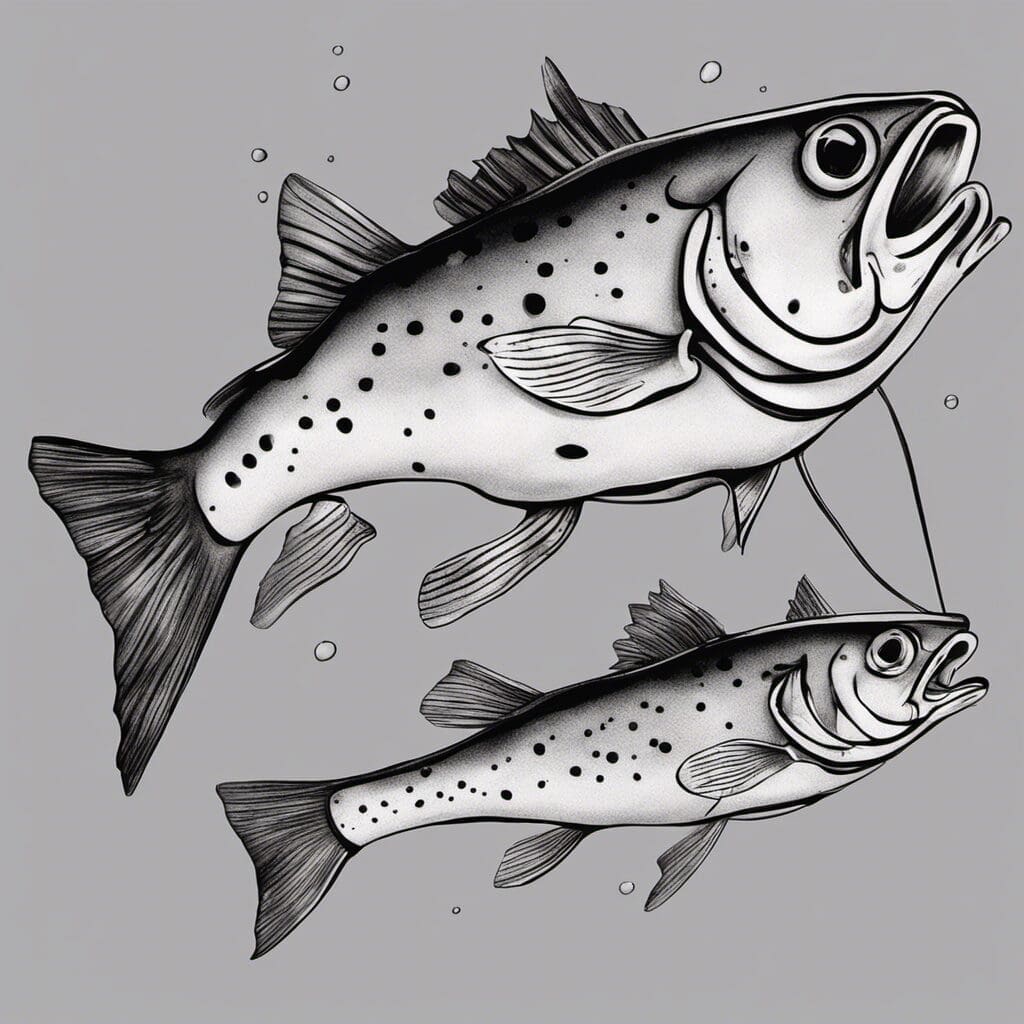Introduction
Species: Pollock
Family: Gadidae
Pollock is a species of fish that belongs to the cod family Gadidae. They are widely distributed in the North Atlantic and are popular for commercial and recreational fishing.
Conservation Status
Current status: Least Concern
Conservation efforts: Pollock fisheries are well-managed and maintain healthy population levels.
Statistics
| Average | Range | |
|---|---|---|
| Length | 70cm | 30-100cm |
| Weight | 7kg | 1-16kg |
| Average Lifespan | 15 years | – |
Pollock are dioecious species, meaning there are distinct male and female individuals.
Distribution
Regions/Countries: North Atlantic, Barents Sea, Norwegian Sea, Canada, USA, United Kingdom, and Ireland.
Migration patterns: Pollock undergo inshore-offshore migrations, with juveniles often found in coastal waters, while adults inhabit deeper waters.
Habitats
Water type: Saltwater
Depth range: 0-200m
Temperature range: 2-10°C in winter, 10-18°C in summer
When and Where to See
Seasonal patterns: Pollock can be found year-round, but are most abundant in summer and autumn.
Time of day: They are most active at dawn and dusk.
Best Fishing Locations
- Gulf of Alaska
- Bering Sea
- Norwegian Sea
- Barents Sea
- Bristol Bay
- Kodiak Island
- Gulf of Maine
- Scotian Shelf
- Kennebec River
- St. Lawrence River
How to Catch
Preferred bait or lures: Sand eels, mackerel, lugworms.
Fishing techniques: Casting, trolling, jigging.
Best time of day or season for fishing: Early morning or late evening during summer and autumn.
Identification Guide
Physical characteristics: Greenish-black on back, silver sides, white belly, forked tail, large mouth.
Comparison with similar species: Pollock have a more elongated body and a shorter chin barbel compared to the Atlantic cod.
Culinary
Pollock is a versatile fish that can be baked, fried, grilled, or broiled and has a mild, slightly sweet taste. It is a great source of protein, B-vitamins, and omega-3 fatty acids.
Additional Information
Pollock are voracious predators that feed on a variety of invertebrates and small fish. They are an important component in the food chain, serving as a food source for larger fish and marine mammals. Pollock are targeted by various fishing industries due to their high commercial value, which may pose risks to overexploitation and bycatch.
References and Further Reading
For more information about Pollock, refer to the National Oceanic and Atmospheric Administration, Alaska Fisheries Science Center, or Marine Conservation Society

